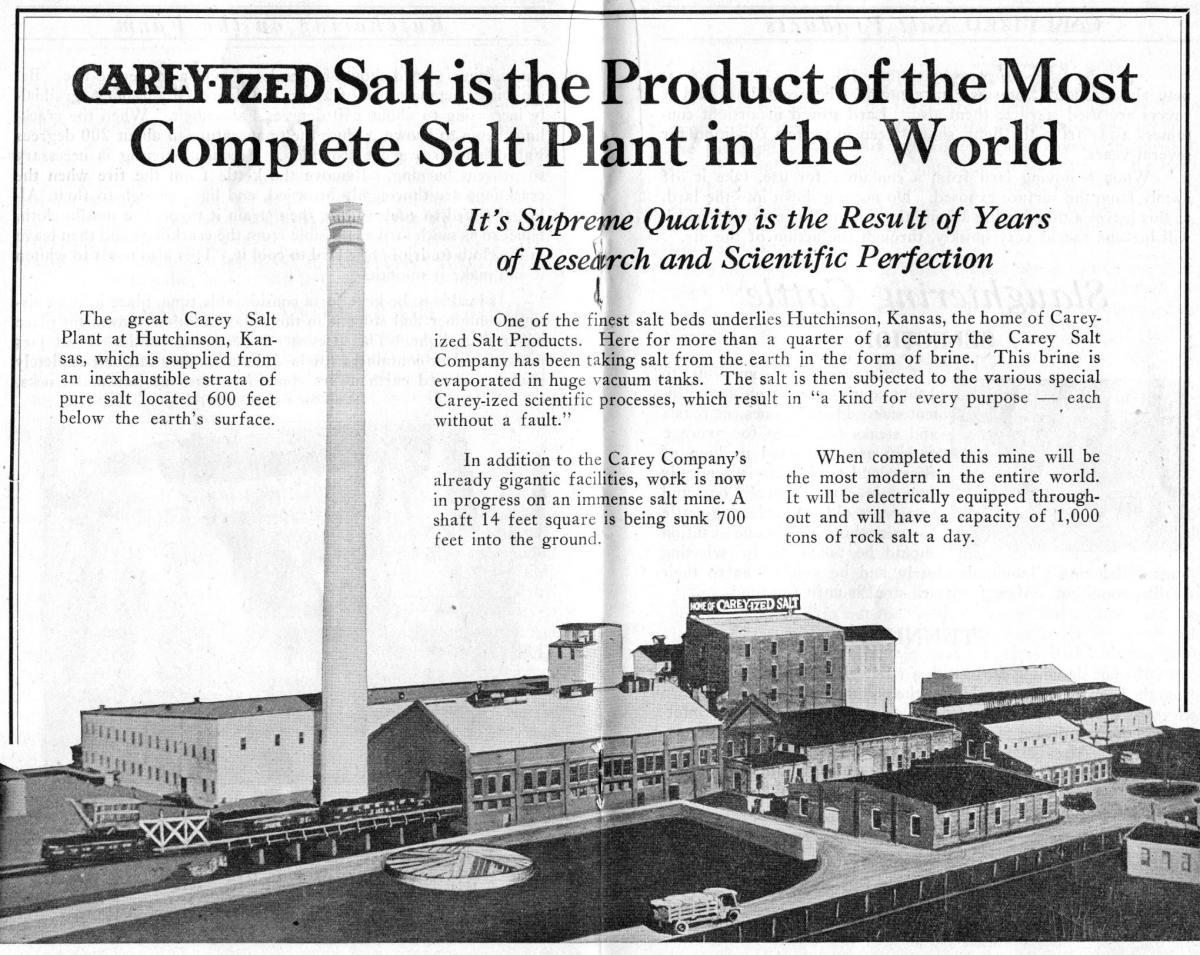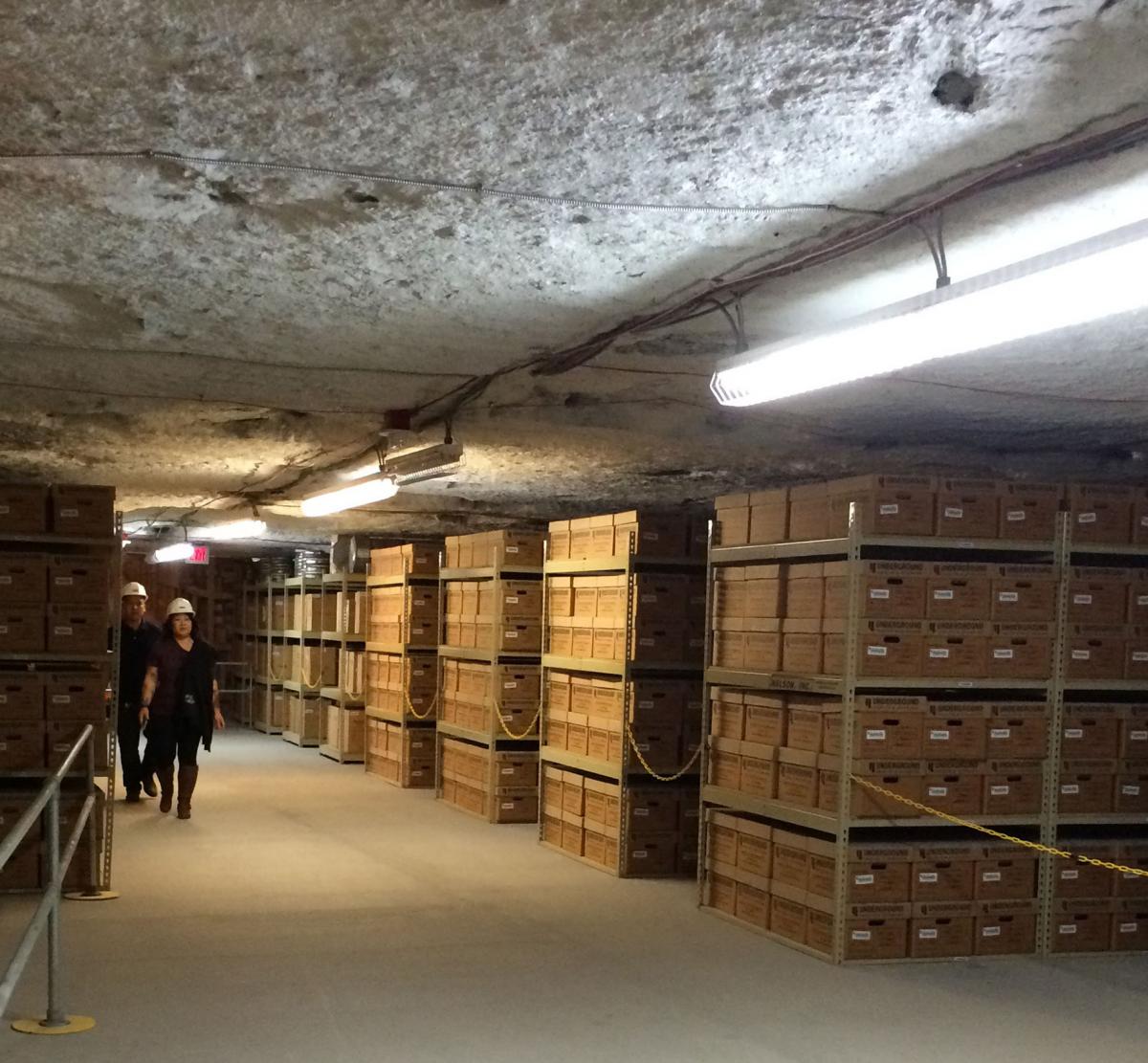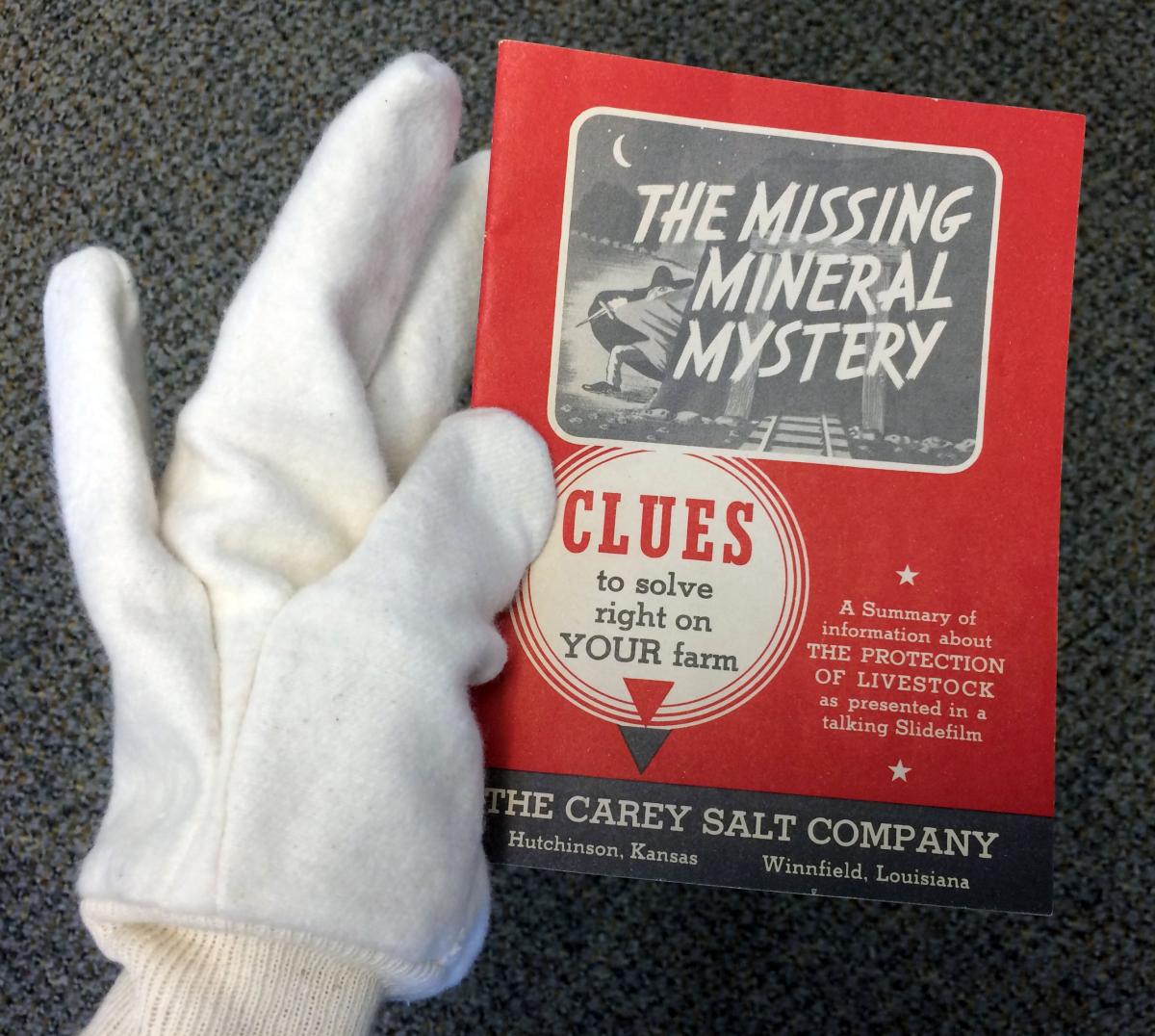When a recent vacation took me from my workplace in Delaware to the state of Kansas, little did I realize that my venture would transport me from the figurative salt mines into the physical. Upon my arrival at the Wichita airport, a travel magazine lured me and my host on a fascinating side trip to Strataca, the Kansas Underground Salt Museum in the city of Hutchinson. Located near the geographic center of the continental United States, this town was founded in 1871 as the new Santa Fe Railway forged the Arkansas River. But its economy was forever transformed by the discovery of subterranean salt deposits in 1887. Numerous plants emerged to produce table salt through evaporation from brine. In 1923, the Carey Salt Company began to extract rock salt manually with picks or blasted by explosives, primarily for the purpose of de-icing roads. By the twenty-first century, members of the local historical society partnered with business to preserve and present the Hutchinson salt story. Their unique approach to curating industrial and cultural heritage opened to the public in 2007.

Descending an elevator shaft 650 feet deep, visitors to Strataca pass several breathless moments through complete darkness, then arrive at an intriguing landscape carved out by decades of “room and pillar” mining. Under this technique, large caverns alternate between columns of salt that sustain the deposits above. Informative vignettes punctuate the self-guided tour with lessons on the geology, microbiology, and technology of the locale. Artifacts bring nearly a century of excavation activities to life and substantiate the docents’ claim that “what goes down in the salt mine, stays in the salt mine.” In fact, the environment maintains such stable temperature (68°F) and humidity (45%) that the space has been developed into a premier storage facility for motion pictures, documents, and other valuable materials.

I couldn’t wait to carry my experience in “Salt City” back to Hagley. My souvenirs include nuggets of rock salt, samples of salt water taffy, and a clever two-thumbed work glove designed to be flipped front to back for extended use during the frugal Depression era. But most important was the insight I gained for placing the varied elements of our Litchfield Salt Collection into the vivid geographical, technological, and cultural context of an active salt mine. As readers may recall from project cataloger Talia Coutin’s recent post, we are currently processing “a world-class collection on the subject of salt, spanning over four centuries and written in eighteen languages,” all contributed by Dr. Carol Litchfield. We invite researchers to explore our catalog which is already sprinkled with enticing resources ranging from treatises on halophilic bacteria, to trade catalogs on mining equipment, to studies on storage of nuclear waste facilities, to booklets of recipes and folklore.

Resources
“About Strataca,” accessed Nov. 11, 2016, http://underkansas.org/
Carey Salt Company. Simple Instructions for Butchering on the Farm. Hutchinson, Kansas : Carey Salt Company, 1922, centerfold pp. 16-17.
Hutchinson, the Salt City : in the Heart of the Great Kansas Wheat Belt. [Hutchinson, Kansas : The News Co., Printers, 1908?]
“Strataca,” accessed Nov. 11, 2016, http://en.wikipedia.org/wiki/Strataca.
Vincent, Frank. History of Salt Discovery and Production in Kansas, 1887-1915. Topeka, Kansas : Kansas State Printing Plant, 1918.
Alice Haines is the Technical Services Librarian at Hagley Museum and Library.
